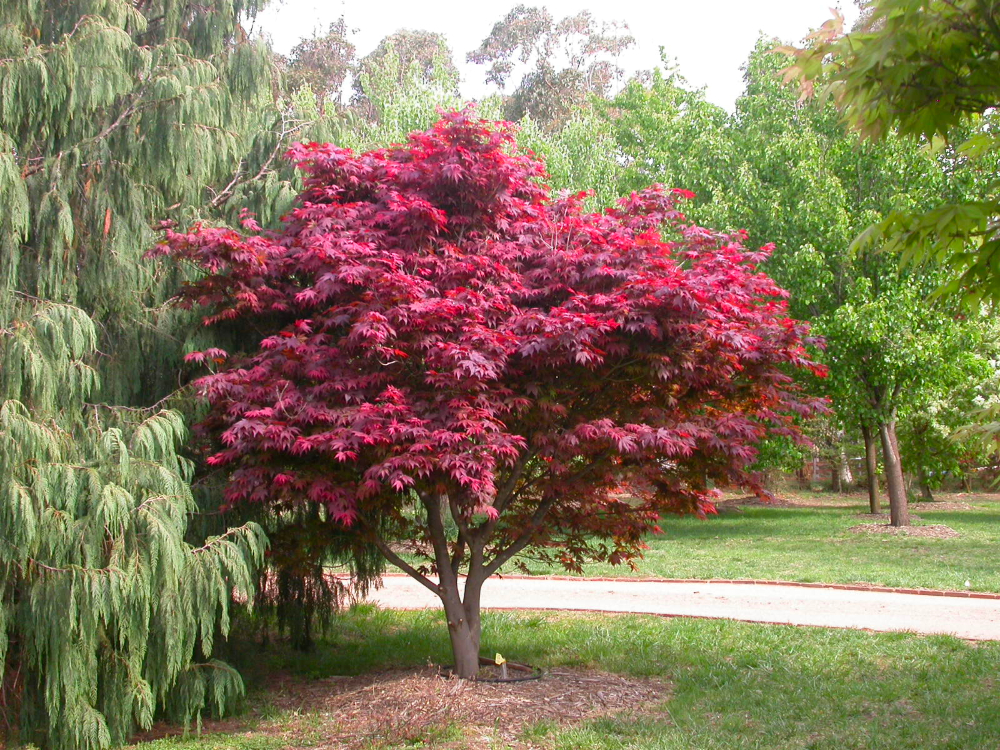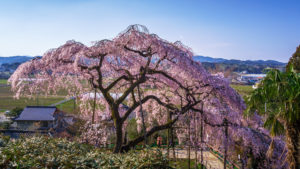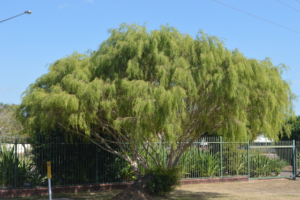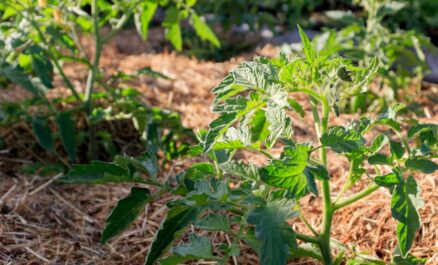The Very Best Weeping Trees For Small Gardens

Weeping trees are used widely as ornamental feature trees in gardens. They include many flowering varieties, including ornamental fruit trees that are wonderful weeping trees for small gardens and larger ones as well! Here are some of the more popular weeping trees in Australia.
Weeping cherry tree (prunus pendula)
The weeping cherry tree is an ornamental tree bred for its beautiful flowers. They are known as “weeping” trees as they have flexible and drooping branches that get completely covered in pink or white flowers that look like they are weeping from a distance. Flowers are seasonal and in full bloom during spring and although they are small, they are showy, and you will find two to five flowers in a cluster on the branches. Their trunk and limbs are heavy and black and hold umbrella-shaped flowers. They are great weeping trees for small gardens because they only grow to a height of around seven metres.
In terms of care, they grow well in most gardens and are low maintenance. However, they will thrive in an area with full sun, not too crowded, in moist and well-drained soil, and should be watered thoroughly after they are planted until the tree is fully established. You can prune the weeping cherry tree after the flowers die. All water sprouts and dead limbs should be removed as well as any other plants or suckers that are growing around the base of the tree. Adding a layer of mulch around the tree will help with keeping the soil moist and retaining water. Fertilising during early spring will assist with blooming.
Dwarf weeping cherry tree (prunus glandulosa)
Image from Hello Hello Plants
The dwarf weeping cherry tree is one of the ideal weeping trees for small gardens and also one of the best trees for pots in Australia. It is commonly also called the Chinese Plum, the Chinese Bush Cherry and the Dwarf Flowering Almond. The last name is probably the most accurate as the fruit is not a plum or a cherry but a dwarf flowering shrub.
They are ideal for smaller gardens and smaller spaces, including in a pot on a balcony or terrace. They are a popular plant in Japanese garden design and also with floral artists, florists and Ikebana enthusiasts.
Flowers that appear in early spring are typically white or pink, single or double, appear in early spring and are held close to the tall stems. Some varieties to consider include Alba plena or Alboplena, which are double white varieties, and Rosea plena, which is a pink double flowering variety.
These plants are deciduous suckering shrubs that will reach around one metre in height with a similar spread. The small green leaves are narrow and do not provide much in terms of autumn colour. They are drought tolerant and easy to care for but are best grown in full sun to a little afternoon shade. Once established, they require little fertiliser, but they prefer well-drained soil.
Weeping willow tree (salix babylonica)
The term “willow” refers to several different shrub and tree species, including the weeping willow tree. It is one of the medium to larger-sized weeping trees and grows to around 25 metres tall. It is deciduous and grows rapidly but has a short lifespan of between 40 and 75 years. The leaves are narrow, spirally arranged and light green and turn a gold-yellow in Autumn. The flowers are produced early in the spring.
Willow species are Weeds of National Significance (WONS). They are among Australia’s worst weeds because of their potential for spread, invasive tendencies and environmental and economic impacts. They can invade wetlands and riverbanks, blocking waterways and causing erosion. They are a serious weed in New South Wales, Victoria and the ACT and smaller numbers are also found in southern Queensland.
However, weeping willow Salix babylonica, and two hybrid species of pussy willow, Salix x calodendron and Salix x reichardtii are permitted species. But if you do have them in your garden or on your property, you must manage the impacts and not sell, give away or release willows into the environment.
Weeping fig tree (ficus benjamin)
The weeping fig tree is a lush, tropical-looking rainforest tree that makes an ideal indoor plant. They are elegant plants with dense, glossy dark leaves and slender branches that arch gracefully from a light grey trunk. They are normally pruned when grown indoors as they are fast growers and may need repotting annually and in early spring for best results.
They are great air quality improvers too, and can help to remove indoor air pollutants. They come in a range of types, including variegated foliage and dwarf varieties and are perfect for training into bonsai. Weeping figs like humidity and prefer brightly lit, warm spots away from direct sunlight. They also prefer to be kept in one position as they can become stressed if moved around. Dust the leaves regularly as it can clog up the pores of the leaves. It’s also worth mentioning that the weeping fig sap can cause eye and skin irritation and is toxic if ingested, so keep it out of reach of animals and children.
Weeping mulberry tree (morus alba pendula)
The densely weeping mulberry tree is one of the best low maintenance trees for your garden. It is fast-growing and can reach a height of three metres and a width of four metres at maturity, so is a magnificent feature tree for a garden design. Its glossy green foliage turns to various shades of yellow and orange in autumn. Flowers are insignificant but are followed by small reddish-black edible fruit. The leaves are also suitable for silkworms, so a great tree for a learning project for the kids!
It is suitable for most soil conditions and climates, tolerates coastal conditions, and responds well to pruning but can be susceptible to aphids.
Weeping tea tree (leptospermum madidum)
Image from Territory Native Plants
The weeping tea tree is a graceful and iconic medium-sized shade tree. It has fine weeping foliage and an attractive trunk and is ideal for screening, accent and feature plantings and is a lovely small decorative specimen for both rural and urban garden beds. Its foliage is lemon-scented and attracts bees, birds and butterflies (particularly bees when it flowers). Cut foliage can also be used for potpourri.
It grows to a height of ten metres and is a great alternative to the weeping willow as it only needs a moderate amount of water. This tree is a native shrub that is beautiful in any garden where you have the room to enjoy the dappled shade it creates. It is also tough and cyclone, flood and drought tolerant once established.
In terms of care, it is best grown in full sun but will tolerate light shade and prefers warmer climates. Plant in free-draining soil rich in organic matter and mulch well until it is established (typically around 12 weeks). Prune and fertilise using a slow-release product yearly after flowering.
Other weeping trees for small gardens
Here are a few other options of weeping trees for small gardens.
Japanese maple (acer palmatum)
Image from Winter Hill
Commonly known as the Japanese maple, this is a small tree or deciduous shrub that reaches a height of up to ten metres. Its canopy often takes a dome-like form, especially when mature. Leaves are long and wide and flowers are white with hints of red or purple. Species to consider in Australian gardens are Acer palmatum dissectum ‘Sekimori’ (which provides a lovely Autumn display and grows to a height of around three metres), Acer Palmatum Dissectum Beni Shidare (which has bright brick-red leaves which turn to orange or bright yellow in autumn), and Acer Palmatum Dissectum Atropurpureum (which produces small reddish flowers which give way to seeds in spring).
Young’s Weeping Birch (betula pendula ‘Youngii’)
Also known as Young’s Weeping Birch, this is an excellent feature tree with long sweeping branches. Green foliage turns yellow in autumn, which looks beautiful against the papery white bark of its trunk. It is usually supplied in a grafted form so the final height will be what you purchase (typically around two to three metres).
Weeping Apricot (prunus mume)
 Also known as the Japanese or Weeping Apricot, this distinct tree species is related to both the apricot and plum trees. The flower (the plum blossom) is widely featured in the traditional paintings of East Asia and Vietnam. It reaches a height of around three metres and produces fragrant pink flowers carried on bare stems in spring.
Also known as the Japanese or Weeping Apricot, this distinct tree species is related to both the apricot and plum trees. The flower (the plum blossom) is widely featured in the traditional paintings of East Asia and Vietnam. It reaches a height of around three metres and produces fragrant pink flowers carried on bare stems in spring.
Cascade Falls (taxodium distichum)
 Image from Pinterest
Image from Pinterest
This is a small to medium sized weeping tree that usually grows to three to four metres in its first ten years of life though it may eventually reach up to six metres over time. When staked to the height you want, the branches grow outward then cascade downwards, and the foliage starts off as light green and then turns darker before changing to bright orange during autumn.
References
- 2020, Weeping Cherry Tree Planting and Caring Pink or White, Dayliliesinaustralia
- 2021, Prunus glandulosa, Nurseries Online Australia
- 2016, Salix babylonica, Weeds of Australia
- 2021, Weeping Fig, Yates
- 2021, Morus alba pendula, Specialty Trees
- 2021, Leptospermum madidum – weeping tea-tree, Australian Plants Online
- 2021, Weeping Trees, Australia Nurseries Online
- 2021, Willow, Business Queensland














